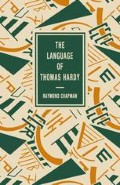Abstract
Conversation is an important element in fiction, as it is in life. One of the tests of quality in a novelist is the skill with which dialogue between characters is presented. In reading dialogue, we feel particularly close to the ‘reality’ with which the novel is linked: it is a fragile link, easily broken by anything that strikes us as artificial. Some writers, of course, make no pretence at illusion, but continually draw attention to the fact that what they are writing is fiction; this is not Hardy’s way, and the reader is expected to enter into the story without disbelief during the time of reading. When characters are supposed to be talking, the reader is in the position of a silent listener, following the conversation rather like one of the eavesdroppers whom Hardy is fond of introducing into the plot.
Preview
Unable to display preview. Download preview PDF.
Notes
Anthony Trollope, Autobiography 1882, Chapter 12: ‘On Novels and the art of writing them’.
Copyright information
© 1990 Raymond Chapman
About this chapter
Cite this chapter
Chapman, R. (1990). Forms of Speech. In: The Language of Thomas Hardy. The Language of Literature. Palgrave, London. https://doi.org/10.1007/978-1-349-20566-0_9
Download citation
DOI: https://doi.org/10.1007/978-1-349-20566-0_9
Publisher Name: Palgrave, London
Print ISBN: 978-0-333-47161-6
Online ISBN: 978-1-349-20566-0
eBook Packages: Palgrave Literature & Performing Arts CollectionLiterature, Cultural and Media Studies (R0)

